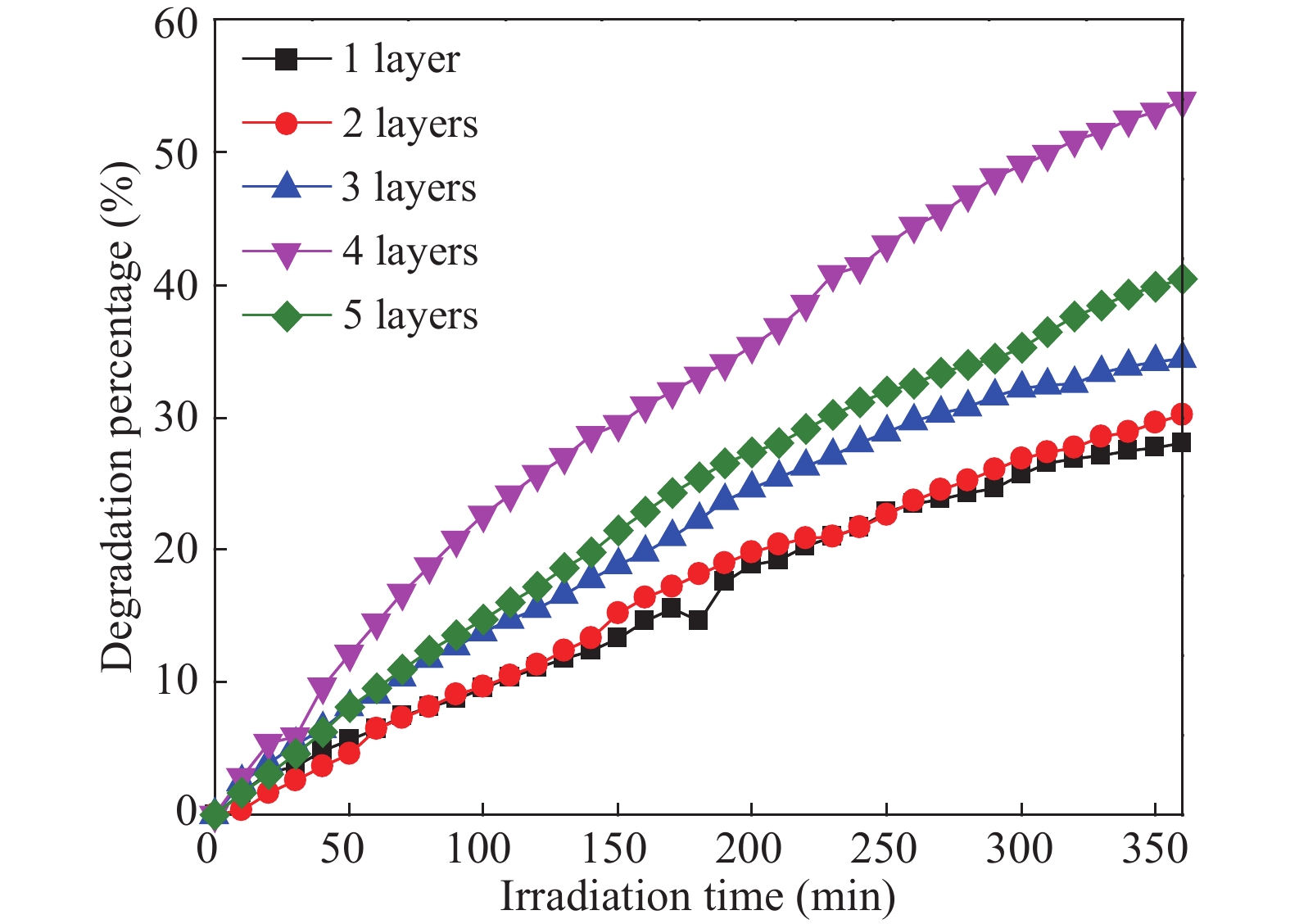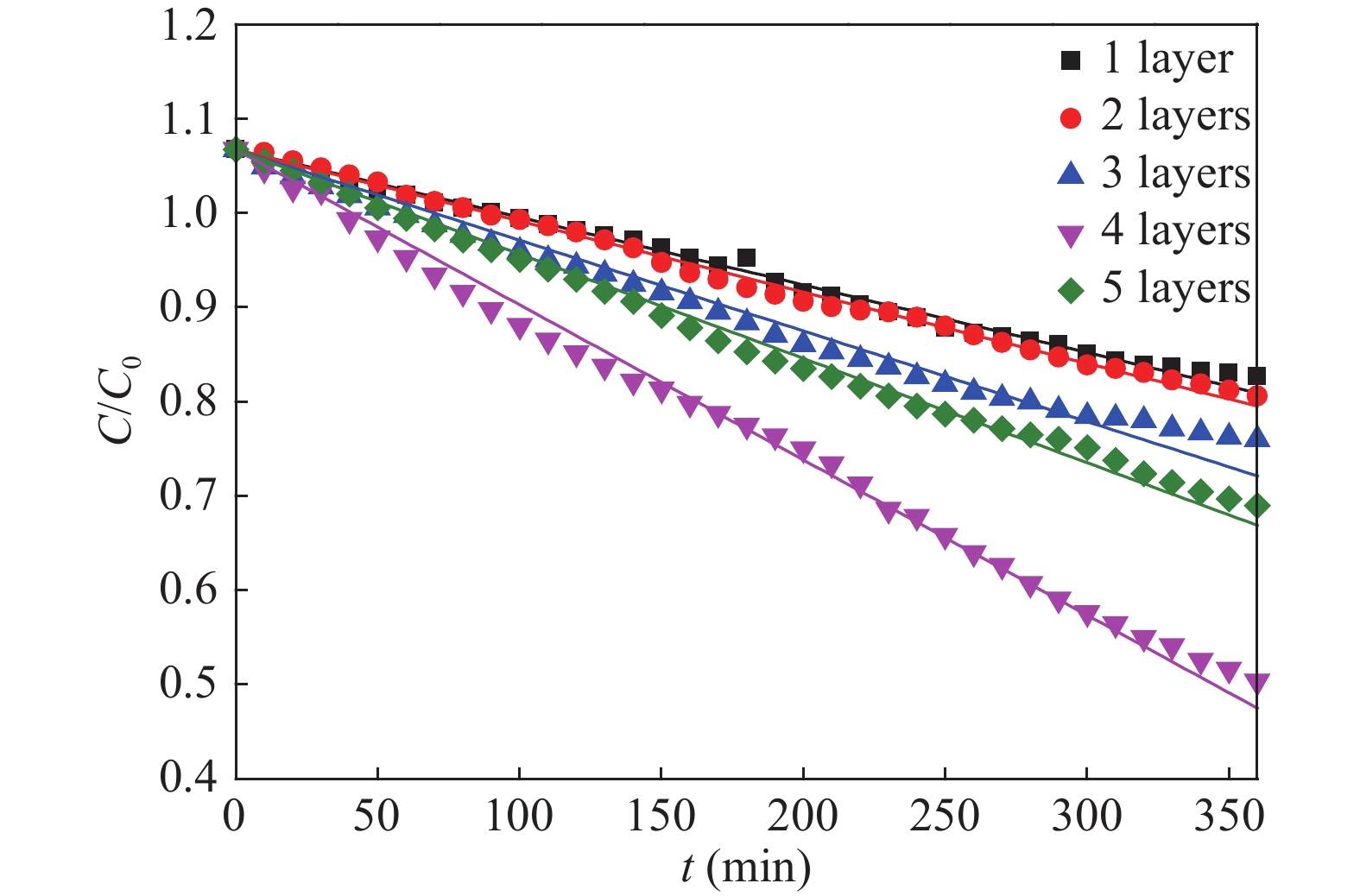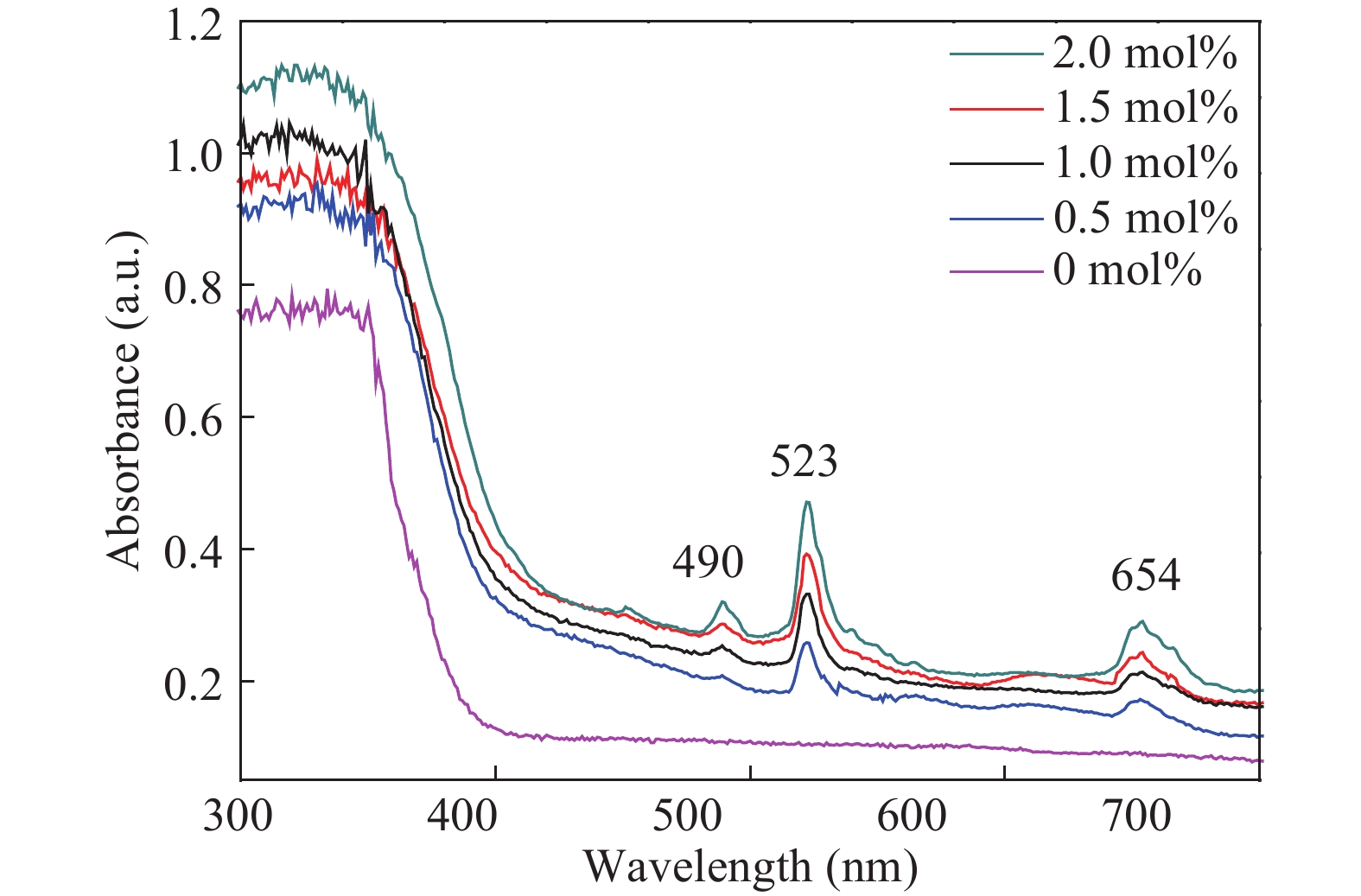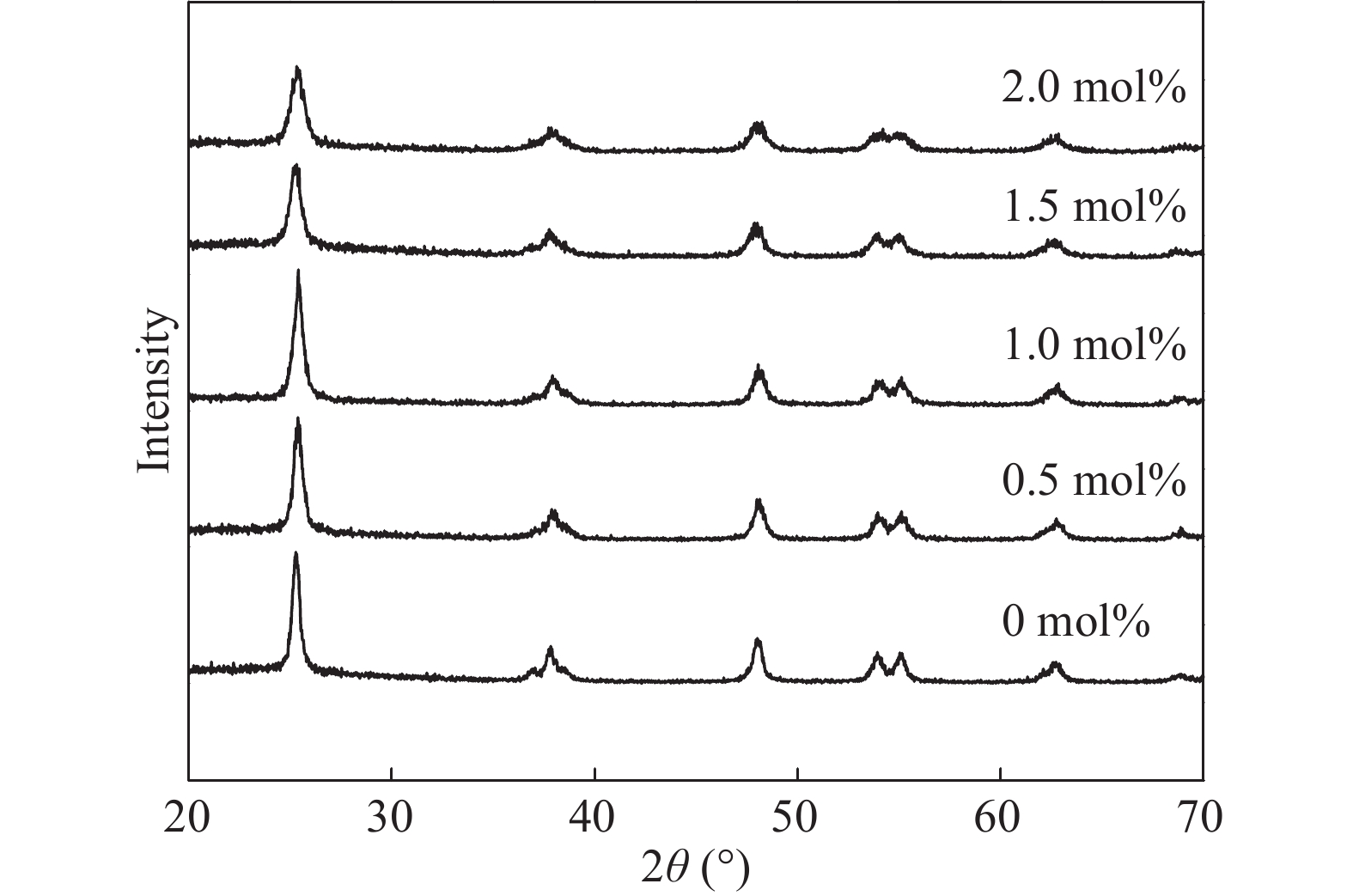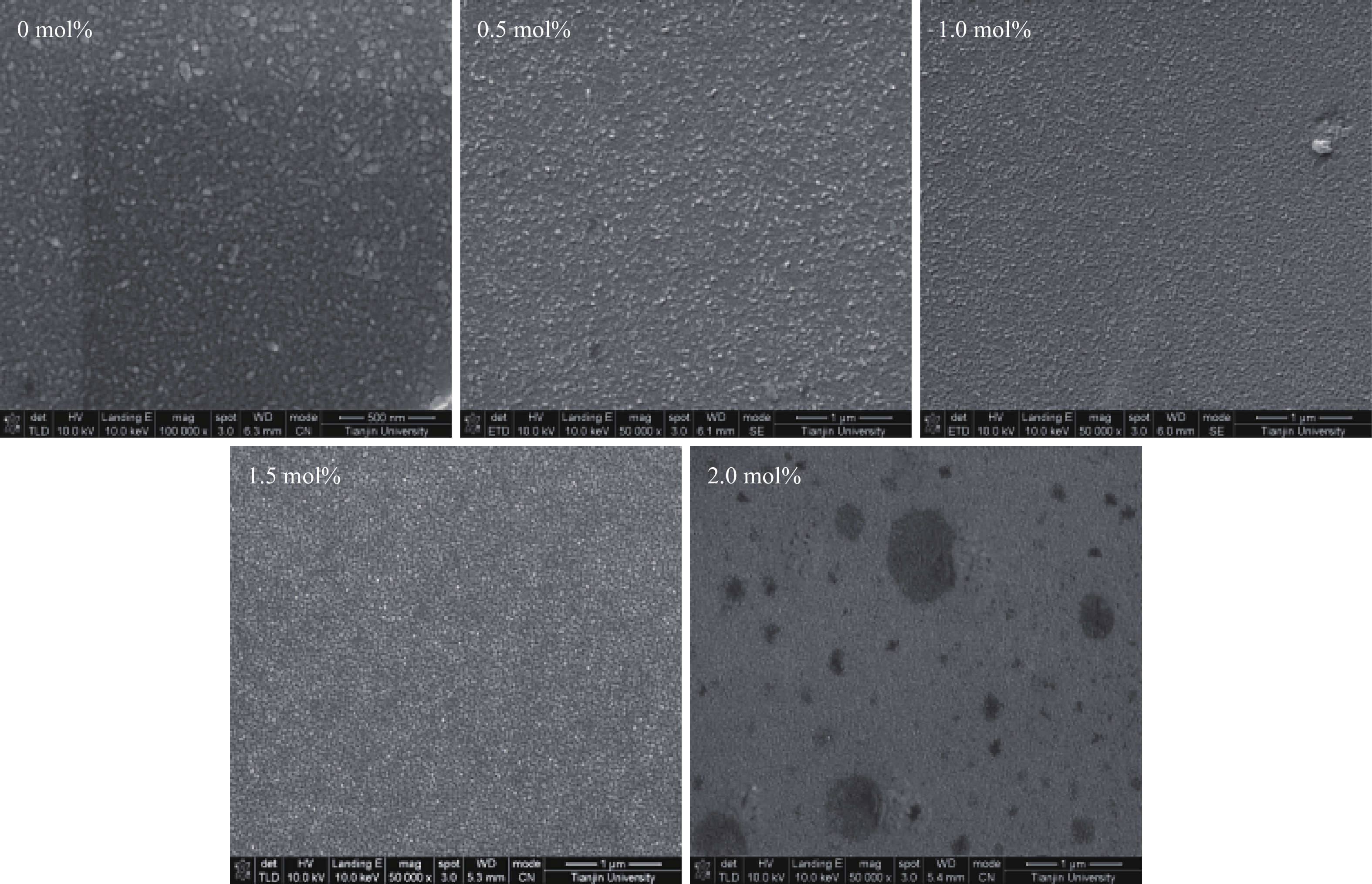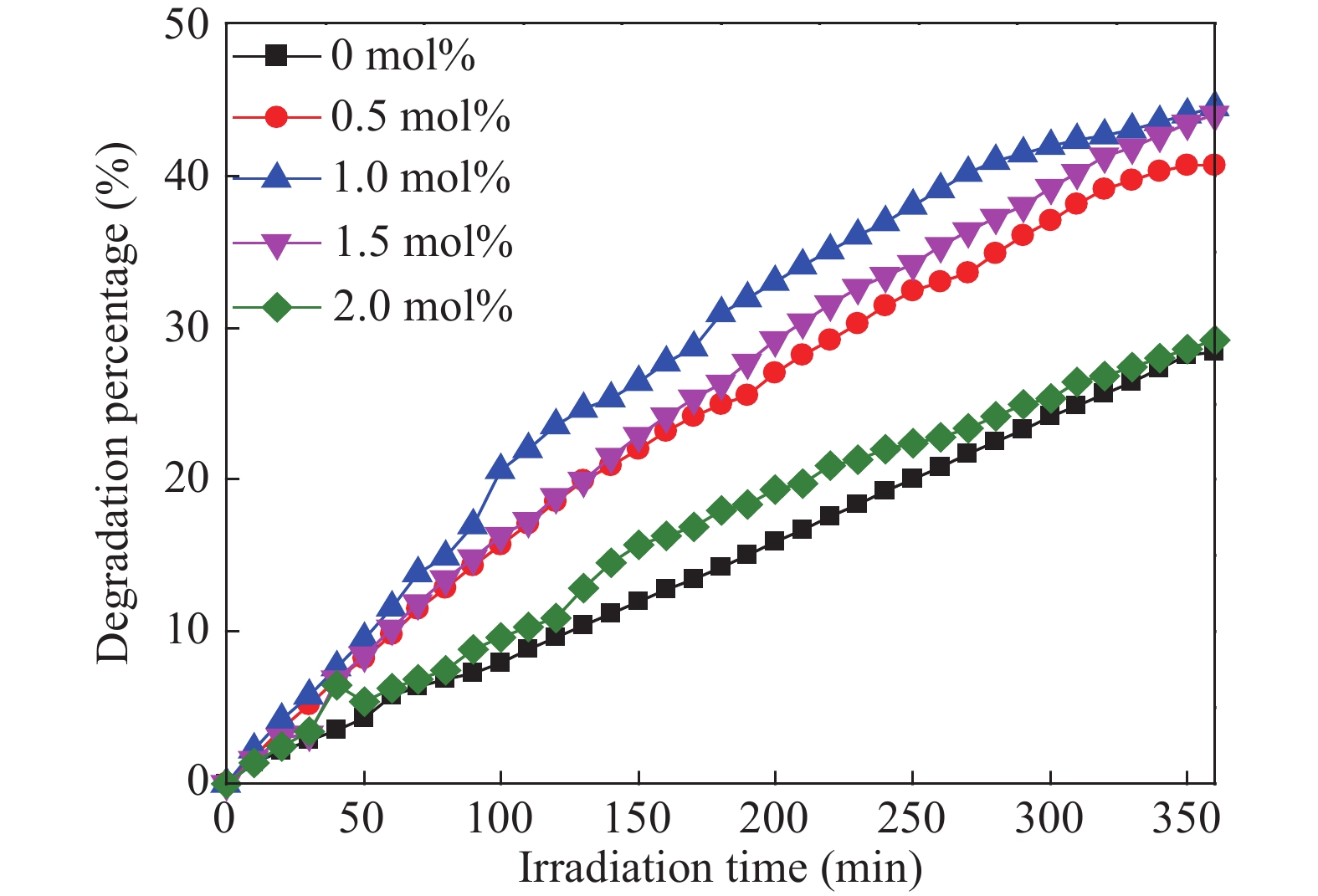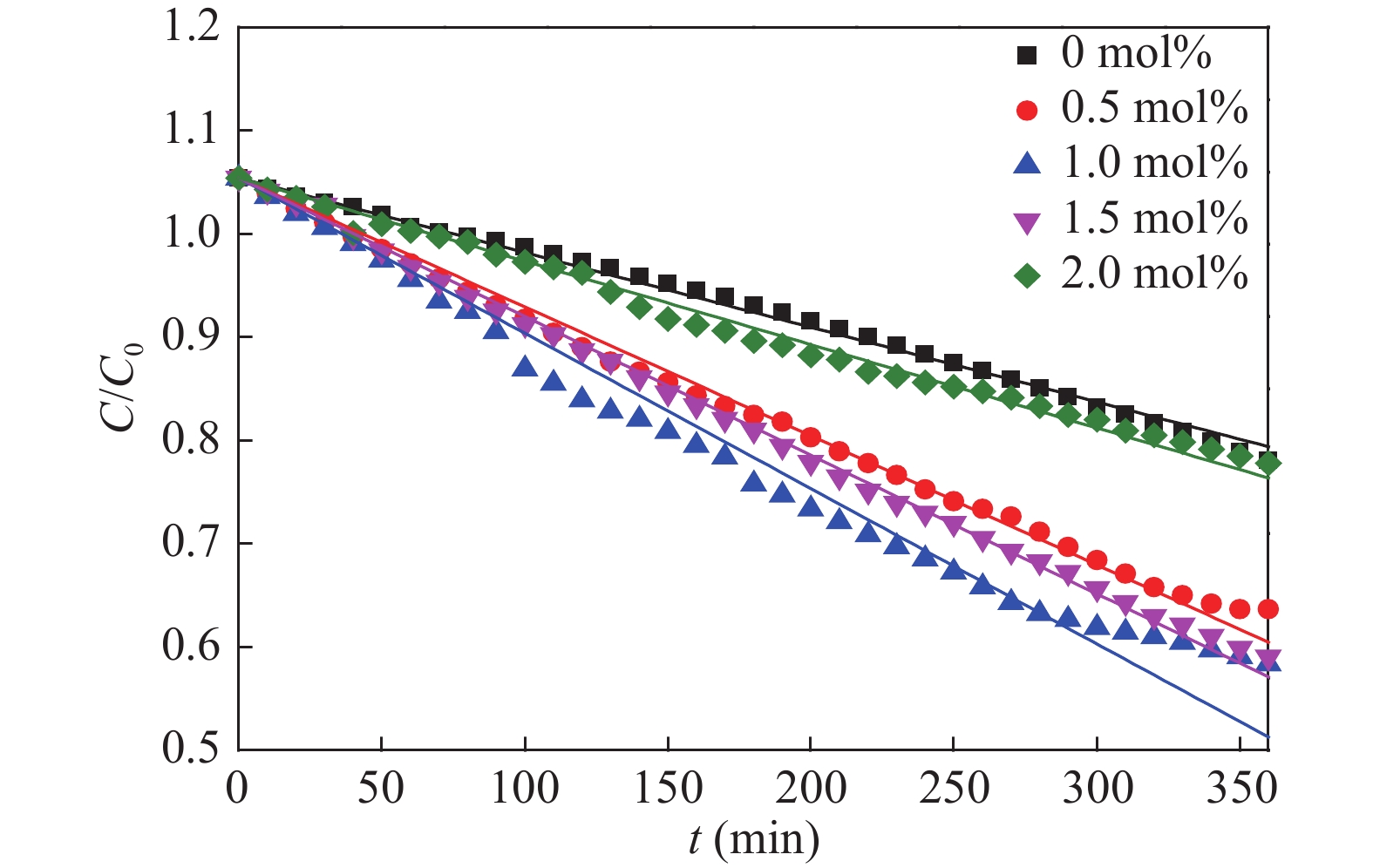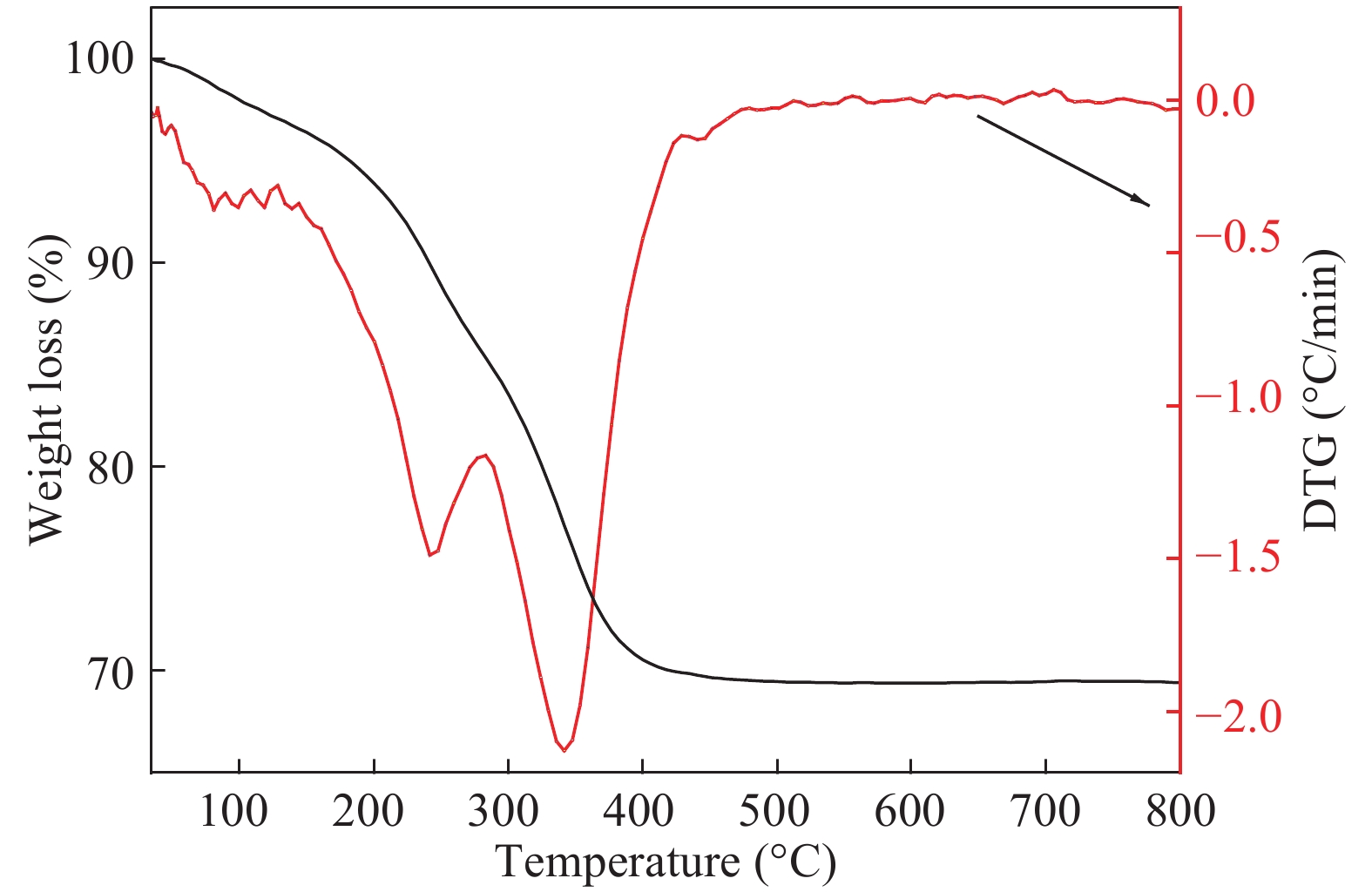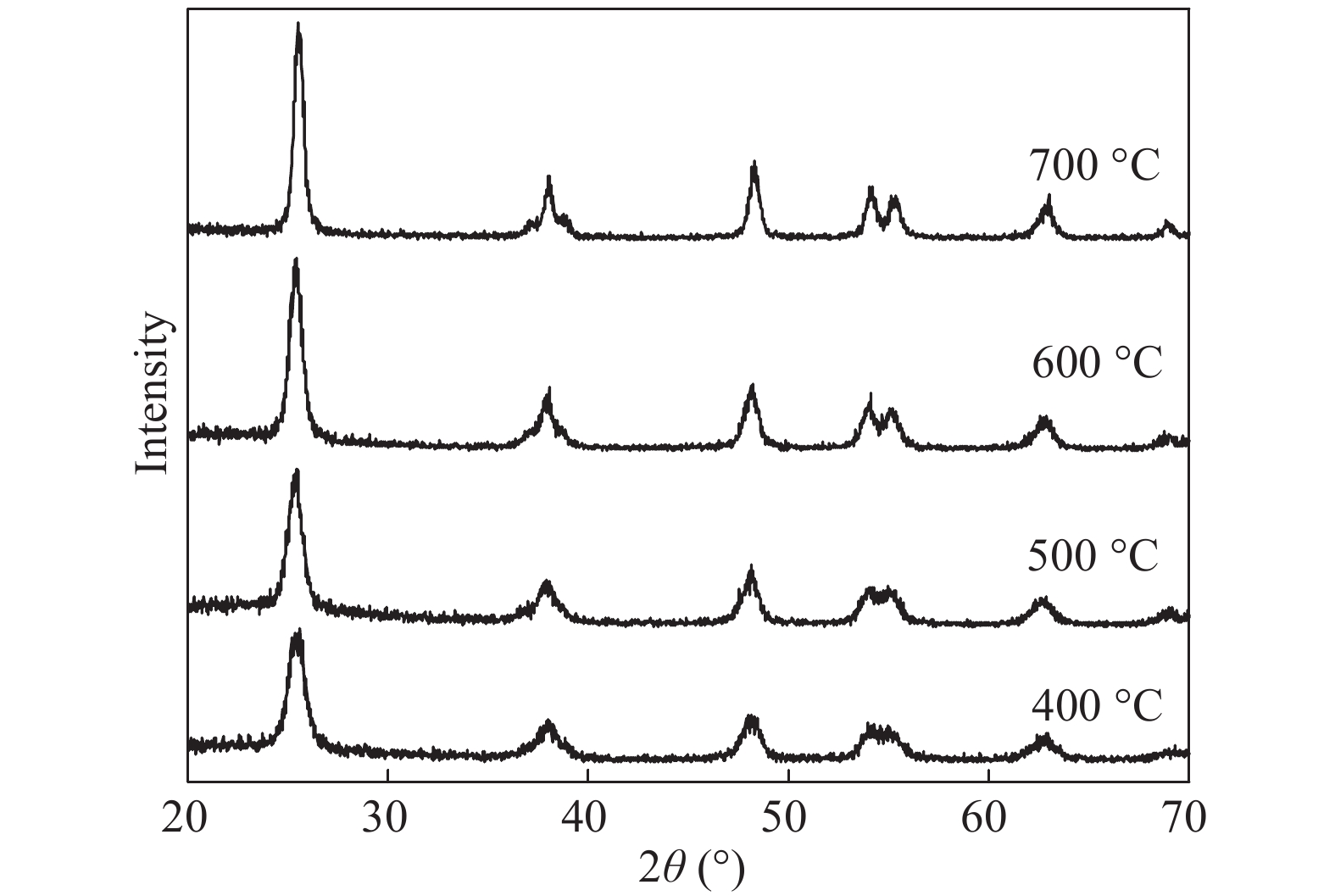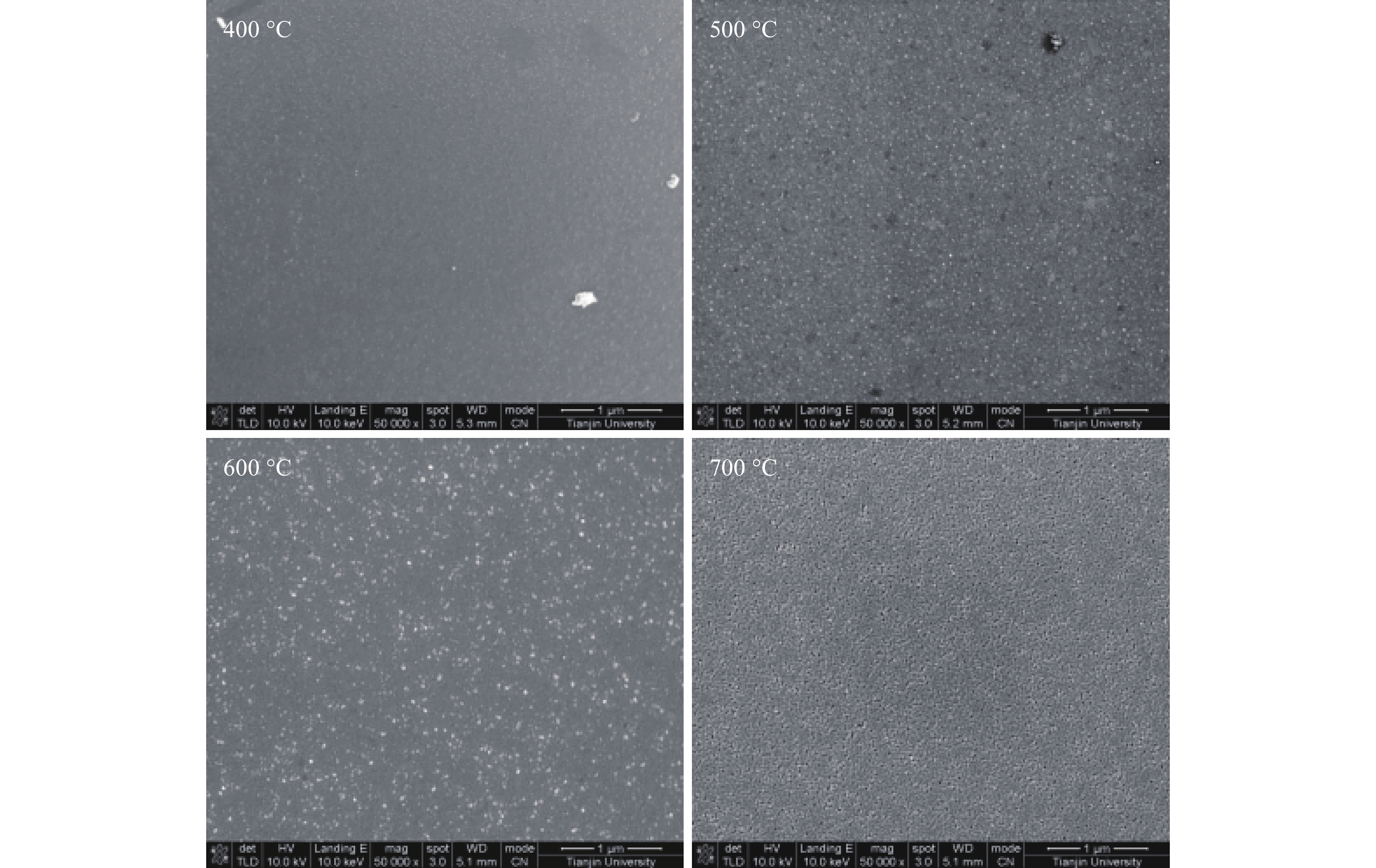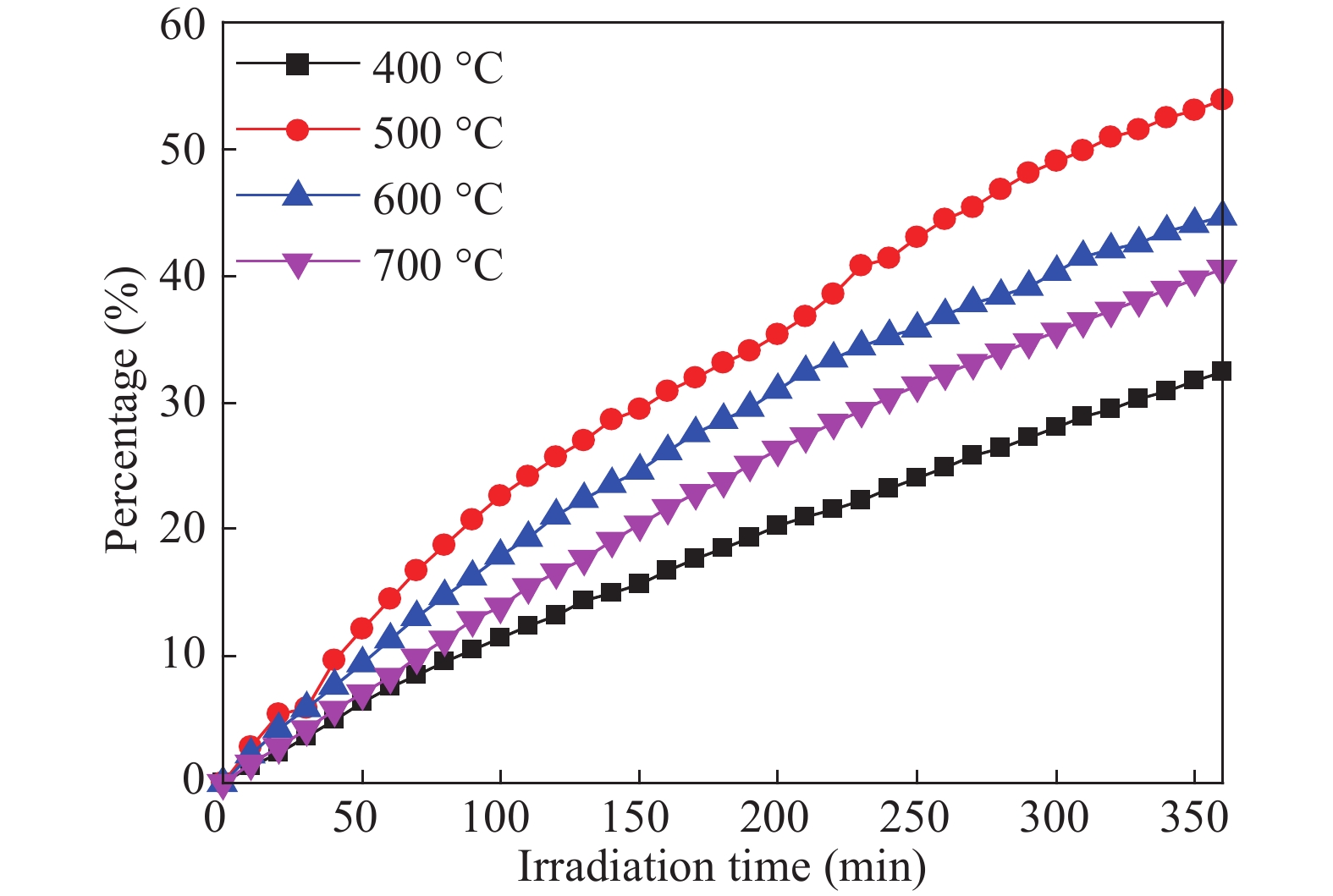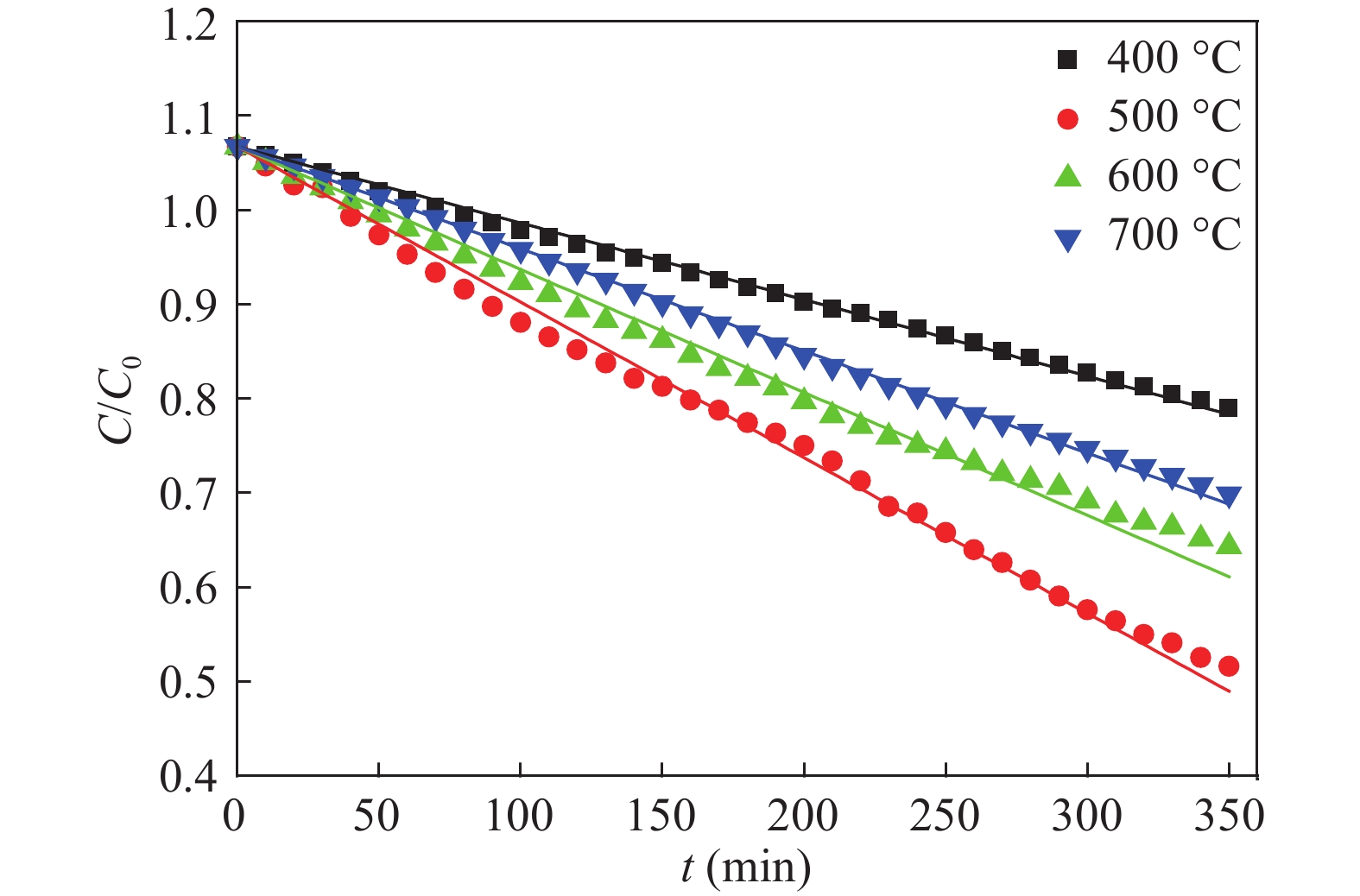| Citation: |
Hongfei Lin, Yujiao Huang, Shaoni Li, Chunhui Luan, Wei Huang, Xiaodong Wang, Xianshe Feng. Preparation of erbium ion-doped TiO2 films and the study of their photocatalytic activity under simulated solar light[J]. Journal of Semiconductors, 2017, 38(11): 113004. doi: 10.1088/1674-4926/38/11/113004
****
H F Lin, Y J Huang, S N Li, C H Luan, W Huang, X D Wang, X S Feng. Preparation of erbium ion-doped TiO2 films and the study of their photocatalytic activity under simulated solar light[J]. J. Semicond., 2017, 38(11): 113004. doi: 10.1088/1674-4926/38/11/113004.
|
Preparation of erbium ion-doped TiO2 films and the study of their photocatalytic activity under simulated solar light
DOI: 10.1088/1674-4926/38/11/113004
More Information
-
Abstract
A series of erbium ion-doped TiO2 (Er3+-TiO2) films were prepared by a sol-gel dip/spin coating method, and the effect of the dosage of erbium ion (0–2.0 mol%), the films coating layers (1–5 layers), and calcination temperature (400–700 °C) on the film structure and photocatalytic activity were investigated in detail. The films were characterized by means of X-ray diffraction (XRD), scanning electron microscopy (SEM), thermal analysis (TG-DTG) and UV–Vis diffusive reflectance spectra (DRS). The results showed that the films were composed of anatase, and no other TiO2 phases (rutile and brookite). With the increase of the erbium ion dosage, the crystal size decreased. Erbium ion doping could enhance the thermal stability of TiO2 and inhibit the increase of the crystallite size. Meanwhile doping of erbium ions gave rise to three typical absorption peaks within the range of visible light (400–700 nm), locating at 490, 523, and 654 nm, attributed to the transition of 4f electrons. The higher calcination temperature led to higher crystallinity and bigger crystal grains. The photocatalytic performance of the films was evaluated by degradation of methyl orange solution under simulated solar light. The highest quality film we prepared was with 4 layers, 1.0 mol% dosage of erbium ion, and the calcination temperature of 500 °C. With this film, the degradation percentage of 7.8 mg/L methyl orange solution was up to 53.3% under simulated solar light after 6 h photoreaction.-
Keywords:
- erbium ion-doped,
- titania,
- films,
- photocatalysis
-
References
[1] Frank S N, Bard A J. Heterogeneous photocatalytic oxidation of cyanide ion in aqueous solutions at titanium dioxide powder. J Amer Chem Soc, 1977, 99(1): 303 doi: 10.1021/ja00443a081[2] Frank S N, Bard A J. Heterogeneous photocatalytic oxidation of cyanide and sulfite in aqueous solutions at semiconductor powders. J Phys Chem, 1977, 81(15): 1484 doi: 10.1021/j100530a011[3] Linsebigler A L, Lu G, Yates J T Jr. Photocatalysis on TiO2 surfaces: principles, mechanisms, and selected results. Chem Rev, 1995, 95(3): 735 doi: 10.1021/cr00035a013[4] Asahi R, Taga Y, Mannstadt W, et al. Electronic and optical properties of anatase TiO2. Phys Rev B, 2000, 61(11): 7459 doi: 10.1103/PhysRevB.61.7459[5] Amtout A, Leonelli R. Optical properties of rutile near its fundamental band gap. Phys Rev B, 1995, 51(11): 6842 doi: 10.1103/PhysRevB.51.6842[6] Koelsch M, Cassaignon S, Minh C T T, et al. Electrochemical comparative study of titania (anatase, brookite and rutile) nanoparticles synthesized in aqueous medium. Thin Solid Films, 2004, 451: 86[7] Pelaez M, Nolan N T, Pillai S C, et al. A review on the visible light active titanium dioxide photocatalysts for environmental applications. Appl Catal B, 2012, 125: 331 doi: 10.1016/j.apcatb.2012.05.036[8] Li X Z, Li F B. Study of Au/Au3+-TiO2 photocatalysts toward visible photooxidation for water and wastewater treatment. Environ Sci Technol, 2001, 35(11): 2381 doi: 10.1021/es001752w[9] Seery M K, George R, Floris P, et al. Silver doped titanium dioxide nanomaterials for enhanced visible light photocatalysis. J Photochem Photobio A, 2007, 189(2): 258[10] Fujishima A, Zhang X, Tryk D A. TiO2 photocatalysis and related surface phenomena. Surf Sci Rep, 2008, 63(12): 515 doi: 10.1016/j.surfrep.2008.10.001[11] Emeline A V, Kuznetsov V N, Rybchuk V K, et al. Visible-light-active titania photocatalysts: the case of N-doped TiO2s—properties and some fundamental issues. Int J Photoene, 2007, 2008: 1[12] Fang Q, Meier M, Yu J J, et al. FTIR and XPS investigation of Er-doped SiO2-TiO2 films. Mater Sci Eng B, 2003, 105(1): 209[13] Czoska A M, Livraghi S, Chiesa M, et al. The nature of defects in fluorine-doped TiO2. J Phys Chem C, 2008, 112(24): 8951 doi: 10.1021/jp8004184[14] Peng Y H, Huang G F, Huang W Q. Visible-light absorption and photocatalytic activity of Cr-doped TiO2 nanocrystal films. Adv Powder Technol, 2012, 23(1): 8 doi: 10.1016/j.apt.2010.11.006[15] Liang C H, Hou M F, Zhou S G, et al. The effect of erbium on the adsorption and photodegradation of orange I in aqueous Er3+-TiO2 suspension. J Hazard Mater, 2006, 138(3): 471 doi: 10.1016/j.jhazmat.2006.05.066[16] Yang Y, Zhang C, Xu Y, et al. Electrospun Er:TiO2 nanofibrous films as efficient photocatalysts under solar simulated light. Mater Lett, 2010, 64(2): 147 doi: 10.1016/j.matlet.2009.10.028[17] Lee D Y, Kim J T, Park J H, et al. Effect of Er doping on optical band gap energy of TiO2 thin films prepared by spin coating. Curr Appl Phys, 2013, 13(7): 1301 doi: 10.1016/j.cap.2013.03.025[18] Gökdemir F P, Saatci A E, Özdemir O, et al. Structural Modification of Sol-Gel Synthesized V2O5 and TiO2 Thin Films with/without Erbium Doping. Adv Mater Sci Eng, 2014, 2014: 795384[19] Guo R, Wu Y, Fu P, et al. Optical transition probabilities of Er3+ ions in La2CaB10O19 crystal. Chem Phys Lett, 2005, 416(1): 133[20] Wang X, Shi F, Gao X, et al. A sol-gel dip/spin coating method to prepare titanium oxide films. Thin Solid Films, 2013, 548: 34 doi: 10.1016/j.tsf.2013.08.056[21] Liang C H. Degradation of Methamidophos Pesticides by Erbium Ion-doped TiO2. J Jilin Agricul University, 2012, 34(5): 536[22] Fan C, Tang Q, Wang Y F, et al. Effect of Er3+ dopant on Microstructure and Photocatalytic Property of Nano-TiO2. Trans Nonfer Met Soci China, 2007, 17(s1B): s716[23] Fang Q, Meier M, Yu J J, et al. FTIR and XPS investigation of Er-doped SiO2-TiO2 films. Mater Sci Eng B, 2003, 105(1--3): 209[24] Zhou M, Yu J, Liu S, et al. Effects of calcination temperatures on photocatalytic activity of SnO2/TiO2 composite films prepared by an EPD method. J Hazard Mater, 2008, 154(1--3): 1141[25] Chai Y C, Lin L, Zhao B, et al. Recent Progress on Rare Earth Elements Doped Nano-Titanium Dioxide Photocatalysts. Mater Rev, 2013, 27(1): 38[26] Blanco E, González-Leal J M, Ramírez-del Solar M. Photocatalytic TiO2 sol-gel thin films: optical and morphological characterization. Sol Energy, 2015, 122: 11 doi: 10.1016/j.solener.2015.07.048[27] Leaustic A, Babonneau F, Livage J. Structural investigation of the hydrolysis-condensation process of titanium alkoxides Ti(OR)4 (OR = OPr-iso, OEt) modified by acetylacetone study of the alkoxide modification. Chem Mater, 1989: 240[28] Acik I, Madarász J, Krunks M, et al. titanium acetylacetonate xerogels for processing titania films a thermoanalytical study. J Therm Anal Calorim, 2009, 97 (1): 39 doi: 10.1007/s10973-008-9647-1[29] Yang Y, Zhang C, Xu Y, et al. Electrospun Er:TiO2 nanofibrous films as efficient photocatalysts under solar simulated light. Mater Lett, 2010, 64(2): 147 doi: 10.1016/j.matlet.2009.10.028[30] Lee D Y, Kim J T, Park J H, et al. Effect of Er doping on optical band gap energy of TiO2 thin films prepared by spin coating. Curr Appl Phys, 2013, 13(7): 1301 doi: 10.1016/j.cap.2013.03.025[31] Fang Q, Meier M, Yu J J, et al. FTIR and XPS investigation of Er-doped SiO2–TiO2 films. Mater Sci Eng B, 2003, 105(1): 209[32] Yang J, Hu Y, Jin C, et al. Structural and optical properties of Er-doped TiO2 thin films prepared by dual-frequency magnetron co-sputtering. Thin Solid Films, 2017, 637: 9[33] Borlaf M, Caes S, Dewalque J, et al. Effect of the RE (RE = Eu, Er) doping on the structural and textural properties of mesoporous TiO2 thin films obtained by evaporation induced self-assembly method. Thin Solid Films, 2014, 558: 140 doi: 10.1016/j.tsf.2014.03.002 -
Proportional views





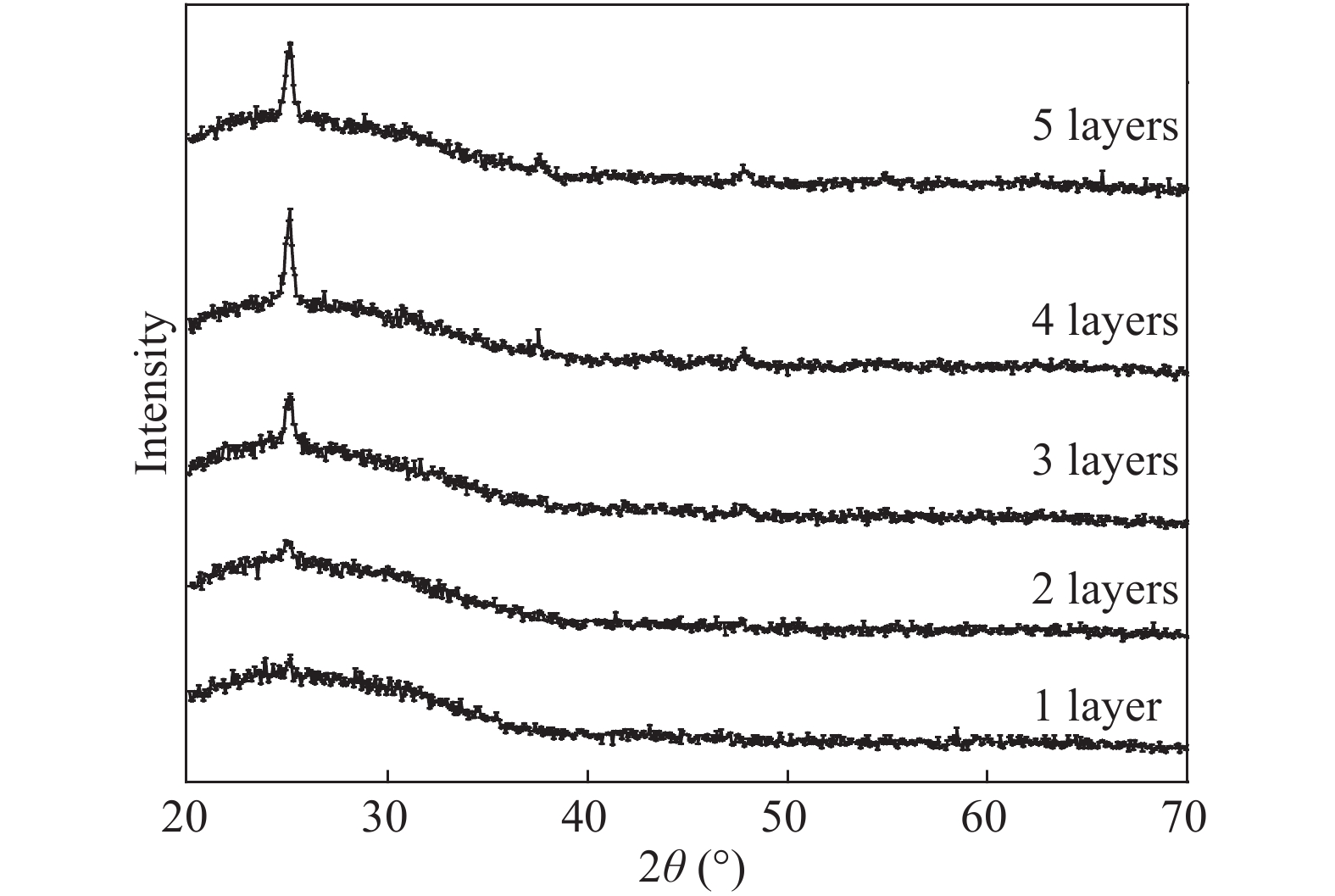
 DownLoad:
DownLoad:
